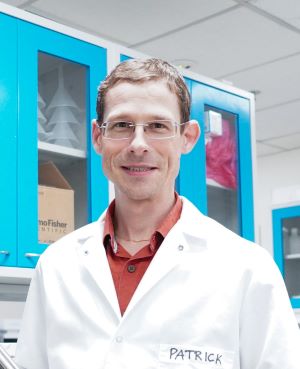 | Patrick MARTIN Assistant Professor, Assistant Chair (Research) Marine Biogeochemistry Email: [email protected] Phone: 6513 8683 Office Location: N2-01c-46 |
Education:
|
Biography:
|
Research Interests: My main research focus at present is on the input of dissolved organic matter from land to coastal seas in South-East Asia. The extensive tropical peat soils in this region are responsible for a significant proportion of the global total land-to-sea organic carbon flux, but we still have a poor understanding of the factors governing this flux, and in particular of how land-derived organic carbon is biogeochemically cycled in estuaries and seas. We also know little about how this carbon flux affects coastal marine environments. Because human land-use practices can have a large impact on the amount of organic carbon released from soils, it is important that we gain a better understanding of the biogeochemical cycling of dissolved organic carbon in the sea. Closely related to the biogeochemistry of organic carbon in the sea is the cycling of nutrients, especially nitrogen and phosphorus, and this is a further research interest of mine. The concentrations and cycling of nitrogen and phosphorus exert an important control over plankton production in the oceans, and are thus intimately linked to the biogeochemical cycling of carbon. Moreover, human societies have strongly altered the global nitrogen and phosphorus cycles, especially through the release of nutrients to aquatic environments. South-East Asia’s tropical seas are naturally low in nutrient concentrations, and thus especially vulnerable to excessive anthropogenic inputs. My research relies to a large extent on collecting samples in the field and analysing them using a range of chemical techniques. My laboratory operates a TOC analyser to measure dissolved organic carbon, a Segmented-Flow Autoanalyser to measure dissolved nutrients, a spectrophotometer and scanning fluorometer for optical measurements of dissolved organic matter, analysers for total alkalinity and dissolved inorganic carbon, and in-situ sensors for seawater carbonate system parameters. In addition, we are working to develop locally validated algorithms to estimate biogeochemical parameters from satellite remote sensing imagery. We are working at field sites in Singapore and Borneo, and looking to expand our activities to other sites in South-East Asia. |
Selected Publications:
|
Teaching:
|














/enri-thumbnails/careeropportunities1f0caf1c-a12d-479c-be7c-3c04e085c617.tmb-mega-menu.jpg?Culture=en&sfvrsn=d7261e3b_1)

/cradle-thumbnails/research-capabilities1516d0ba63aa44f0b4ee77a8c05263b2.tmb-mega-menu.jpg?Culture=en&sfvrsn=1bc94f8_1)

7e6fdc03-9018-4d08-9a98-8a21acbc37ba.tmb-mega-menu.jpg?Culture=en&sfvrsn=7deaf618_1)
